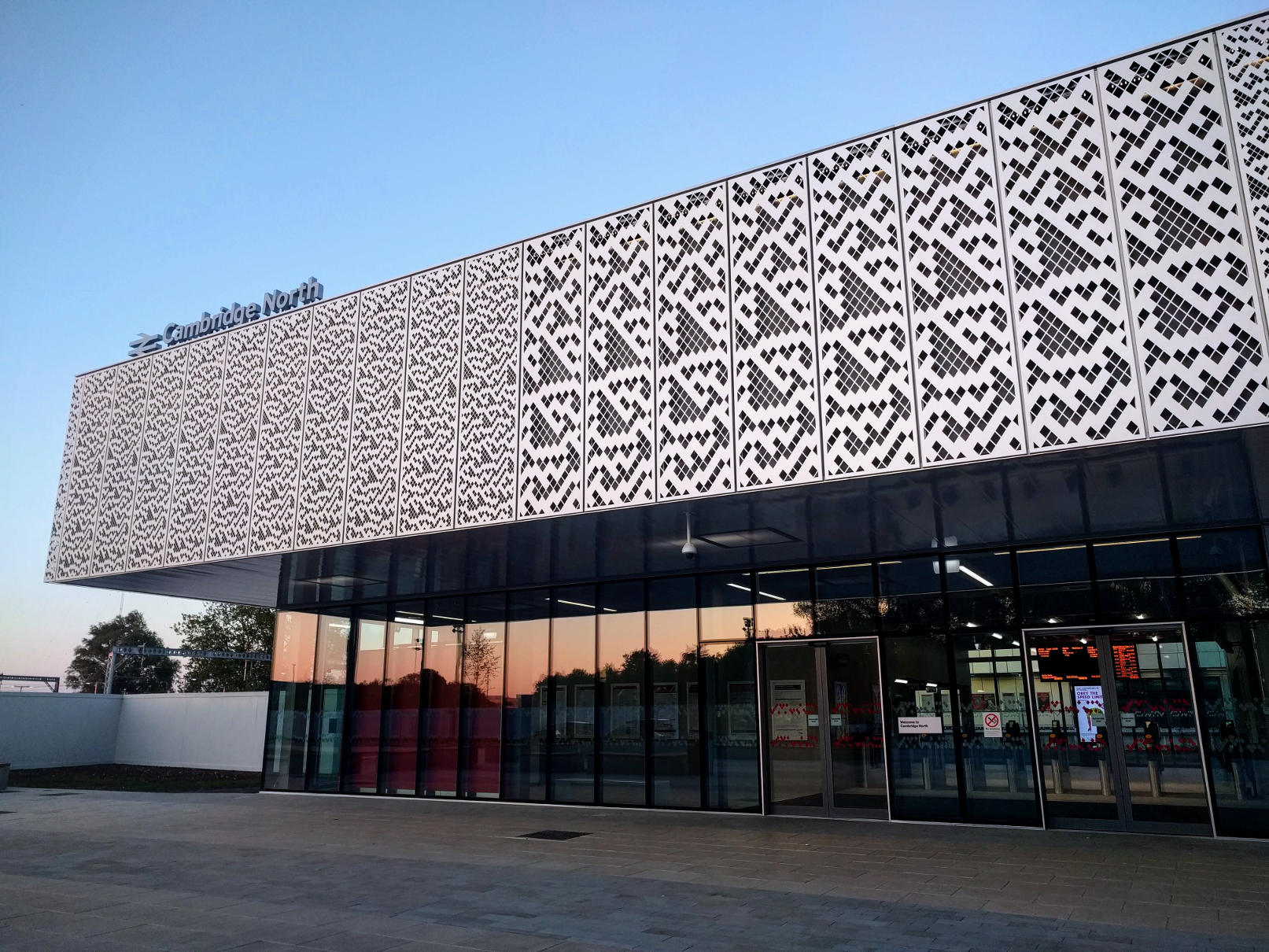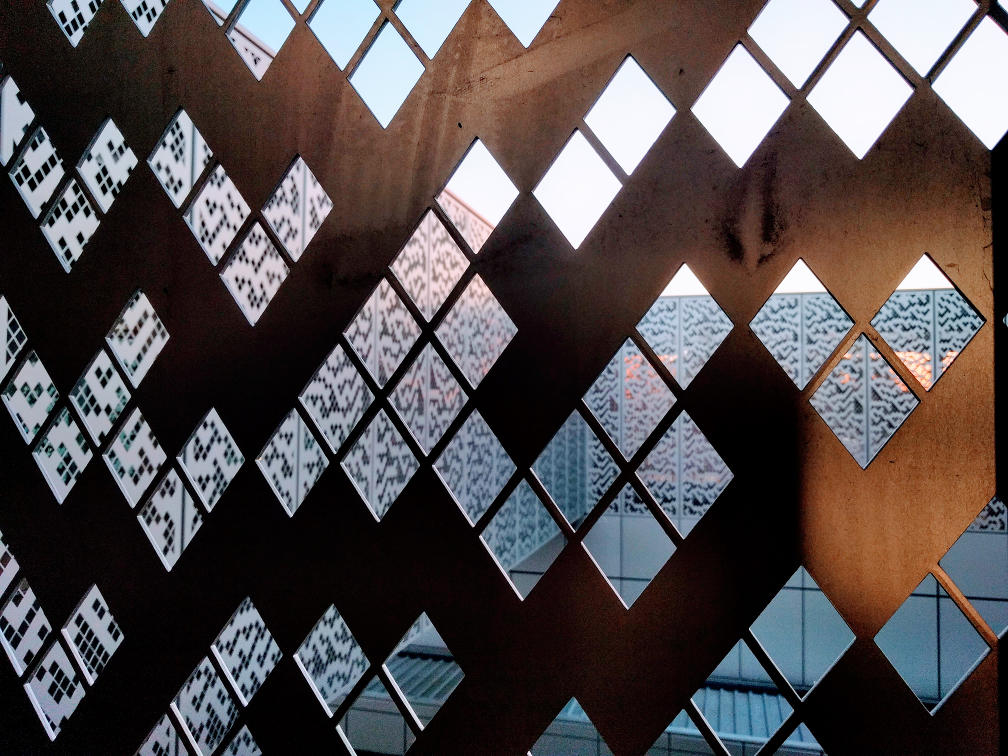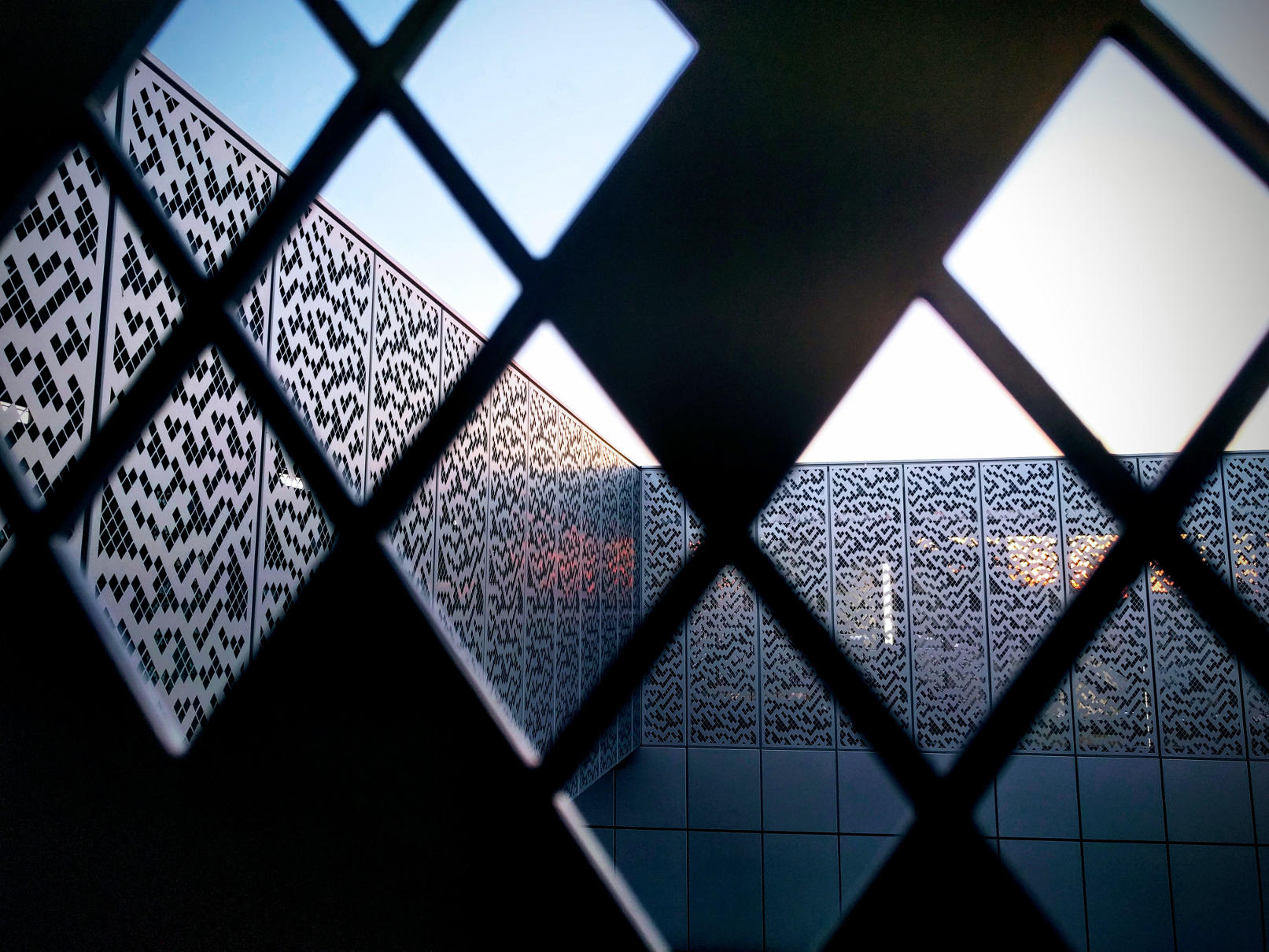
Last year this new train station, "Cambridge North", opened in Cambridge, UK -- with its walls cut into this mesmerizing pattern.
A bunch of mathematically-minded folks started sending snapshots of it to Stephen Wolfram, the computer scientist famous for studying cellular automata. Back in the 80s, he'd famously created 256 simple rulesets that, beginning with single cell, would produce complex, byzantine patterns. When Wolfram looked at the Cambridge North building, he recognized it as his favorite pattern of all time: "Rule 30".
Rule 30 is famous for producing chaotic, seemingly-random results, which you can see in just the first few dozen iterations: 
The ultimate result of a Rule-30 sequence might be even useful in crypto, because it's pretty hard to work backwards to its initial state. Rule 30 is also found in nature, including in the patterns on the shells of Conus textile.
Wolfram wrote an essay about the station, Rule 30, and the math behind its aesthetic appeal:
What are some facts about the rule 30 pattern? It’s extremely hard to rigorously prove things about it (and that’s interesting in itself—and closely related to the fundamental phenomenon of computational irreducibility). But, for example—like, say, the digits of π—many aspects of it seem random. And, for instance, black and white squares appear to occur with equal frequency—meaning that at the train station the panels let in about 50% of the outside light. [snip] When we look at the pattern, our visual system particularly picks out the black triangles. And, yes, it seems as if triangles of any size can ultimately occur, albeit with frequency decreasing exponentially with size. If one looks carefully at the right-hand edge of the rule 30 pattern, one can see that it repeats. However, the repetition period seems to increase exponentially as one goes in from the edge.
Some more terrific pictures are below, taken by the data scientist Alyssa Adams ... 




Images used with permission of Alyssa Adams


